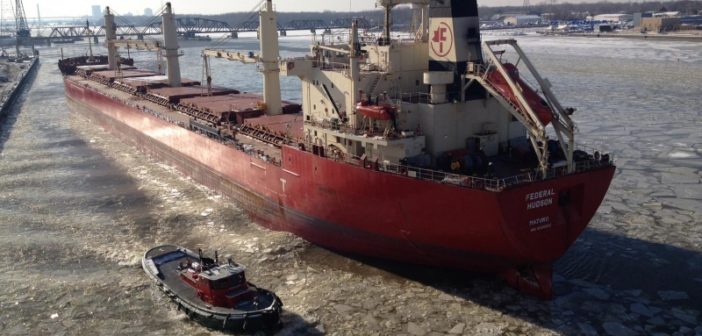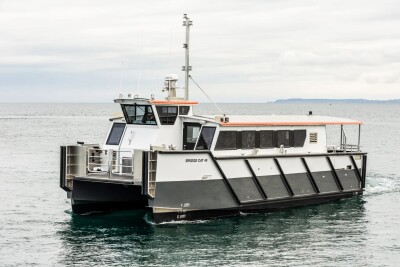Great Lakes-St. Lawrence Seaway ports and ship operators are hoping for a strong finish to an otherwise turbulent year. Cargo totals on the St. Lawrence Seaway hit nearly 32.3 million metric tons (from April 1 to November 30), down 6.6% from 2019.
Compared to previous months, the improvement in total cargo figures in November is due in large part to grain shipments, which have been strong since the fall harvest began. Year-to-date grain shipments via the Seaway (including Canada and the U.S.) are up 23%. U.S. grain specifically is up nearly 20%. The large increases are welcomed by ports and industry officials, who anticipate the trend to continue into 2021. Year-to-date shipments of iron ore (-13%), dry bulk (-15%) and liquid bulk (-36%) remain down.
“Grain shipments are expected to continue to be strong for the remainder of the year. Ocean vessel traffic currently in the system is up 20 percent over the five-year average,” said Bruce Burrows, president and CEO of the Chamber of Marine Commerce in a statement announcing the numbers. “This will certainly help our Chamber members who have experienced various highs and lows this year due to the pandemic. It’s nice to see the year end on a positive note.”
Another positive commodity moving through the Seaway in November was project cargo, including wind turbine components, up 57% year-to-date.
The Port of Duluth welcomed its final inbound wind energy cargo vessel in late November, topping off a record-setting season of 525,000 freight tons of wind energy cargo in 2020; a single-season record far surpassing the 2019 record 306,000 freight tons. In total, 30 ships carrying components from eight countries called the port this year, which will collectively assemble over 150 wind turbines in Minnesota, North Dakota and South Dakota.
“It’s been a difficult year under the cloud of a global pandemic, but this freight tonnage record is a much-appreciated highlight, made even better by the fact that Duluth Cargo Connect set records in consecutive seasons,” said Deb DeLuca, executive director of the Duluth Seaway Port Authority. “Looking beyond the numbers, the port’s emergence as a wind cargo hub is an important win for cargo diversity and for the expansion of renewable energy nationwide.”
International shipments also boomed at the Port of Toledo in November as 16 ocean vessels called the port, delivering salt, pig iron and sugar, and exporting over 180,000 tons of soybeans around the world. The international shipments coupled with cargo from the lake trading vessels and barges pushed Toledo tonnage totals close to 2019’s totals, due in large part to grain, which is up 61%.
“This time of year, you get a real sense for the important role the Port of Toledo and the Great Lakes-St. Lawrence Seaway System play in the global supply chain,” said Joseph Cappel, VP of business development for the Toledo-Lucas County Port Authority. “We are currently reaping the rewards of a good grain crop and we are fortunate that Toledo is both a destination and origin for cargo. Toledo has always been a location where agriculture and industry come together and both are supported by a robust multi modal transportation network.”
The Port of Green Bay overcame low October figures with a healthy November, moving nearly 238,000 tons through the port. Increases in limestone imports led the way, nearly 100,000 tons, in addition to strong performances by coal, petroleum and imports of foreign and domestic salt. To date, the port has tallied 1.64 million tons of cargo this season, 21% below the strong 2019 season.
“As the economy and the ongoing pandemic continue to impact 2020 shipping traffic into and out of the Port of Green Bay, we’re hoping for a good finish to the shipping season this month and into January,” Haen added. “Getting to our target of 2 million tons is not likely at this point, but an uptick in port activity would help narrow the gap and provide optimism as we look forward to next year.”





